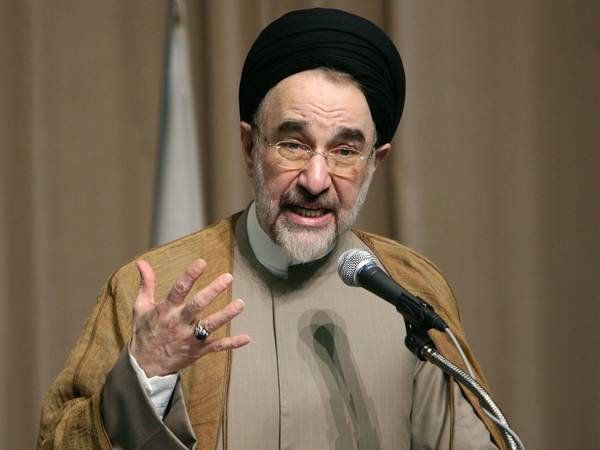Iran’s former president Mohammad Khatami has highlighted the "unprecedented" absence of 60% of the electorate in Friday’s presidential election, stressing that dissatisfaction extends beyond just the non-voters.
“This act is a clear sign of the public's dissatisfaction with the current state of affairs and indicates the majority's discontent with the ruling system,” said Khatami. “The dissatisfaction is not limited to those who abstained from voting; many of those who did participate are also dissatisfied and voted in the hope of change."
Khatami stressed the importance of everyone participating in the second stage of the elections on July 5 to “complete the unfinished task.” He warned that abstaining could lead to the victory of an "approach harmful to the nation.”
The formerly popular reformist president announced his intention to vote for Masoud Pezeshkian, the sole reform-leaning candidate, and urged others to do the same.
The June 28 presidential election witnessed a historically low voter turnout in the Islamic Republic's history, with only a 39.92 percent participation. This broke the previous record set during the last election, when the late President Ebrahim Raisi won with a 48 percent turnout, providing a clear indication of the current political climate.
A runoff election will be held on Friday, with hardliner Saeed Jalili competing against Masoud Pezeshkian.
Khatami's call for participation in the election comes after he, for the first time in his political career, refrained from voting in the March parliamentary election, despite Supreme Leader Ali Khamenei's repeated assertions that voting is a religious duty. Previously, Khatami acknowledged that "people had the right to be disillusioned with reformists just as they are with the ruling system." This time, however, he is urging people to vote.
There is a notable difference in the current election compared to the parliamentary elections. Reformist parties and groups, such as the Etehad-e Mellat (Nation’s Unity) party, who were previously denied the opportunity to field any candidates, have now endorsed Pezeshkian. They engaged in an intensive campaign to convince voters to take part and elect Pezeshkian. Nevertheless, despite their campaign and repeated calls by Khamenei, at least 60% refused to vote according to official figures. Many Iranian on social media express doubt even about the 40% turnout, insisting that the government boosted the numbers to push the final tally to 24.5 million votes out of 61.5 million eligible.
The results showed that reformists and even the once popular Khatami have lost the trust of the majority.
The erosion of trust in reformists is evident in the public's perception of the ruling establishment, now viewed as a consolidated power structure led by Supreme Leader Ali Khamenei and the Islamic Revolutionary Guard Corps (IRGC), effectively marginalizing the president's authority.
This perspective is mirrored by the reform-leaning candidate, who has consistently acknowledged during debates that Khamenei is the ultimate decision-maker and pledged his adherence to the Leader's directives.
In the latest debate on Monday, Pezeshkian critiqued Jalili for attributing decisions to himself that were, in reality, Khamenei’s. “The final decision is made by the Leader. Don't say that something was done because I was in charge—no. If Mr. Khamenei doesn't like it and doesn't see it as appropriate, he won't allow it to happen,” Pezeshkian asserted, a stance that in theory, appears even more hardline than Jalili's.
It is worth noting that not all reformists continue to believe in “improving” the system. Key marginalized figures within the reform faction have also boycotted the election. Mirhossein Mousavi and Zahra Rahnavard, both under house arrest since 2011, abstained from voting in the presidential elections. Some imprisoned reformists such as Mostafa Tajzadeh also called for a boycott.
